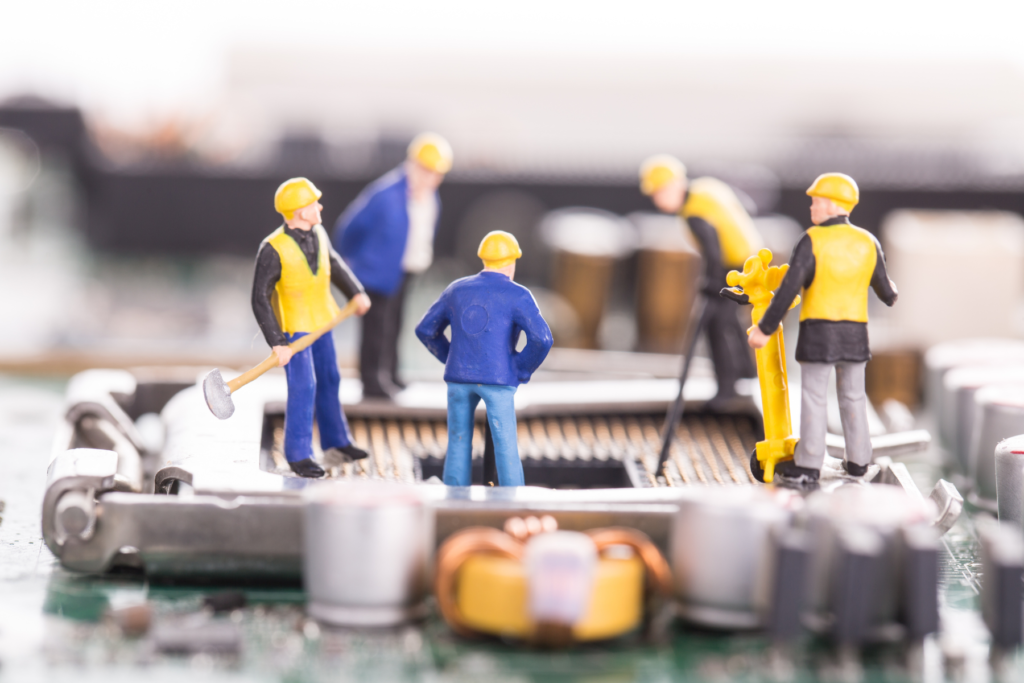Is the Objective Reliable Availability?
John Yolton, Principal at FOG Group
Posted 11/22/2022
I have received untold phone calls over the past several years, from friends in the industry, explaining that their mill is/was undergoing a ‘re-engineering’ of maintenance. Re-engineering in the broadest sense, including panic payroll reduction.
The general theme of that re-engineering effort seems to be elimination of the maintenance department per se. Perhaps, however, behind this change, there is a larger, broader expectation.
Perhaps this thought has occurred. “If I can do away with the maintenance organization then I do away with maintenance costs.” Take the function away and the cost will go away.

One can only assume it is widely believed by those making these decisions that somehow those ongoing ‘maintenance’ activities will be accomplished by someone, apparently by magic. Asset[1] reliability and availability is the product of some action.
Poor reliability, usually followed by poor availability, is the result of inappropriate actions. The bulk of the actions is activity by people, both internal and external. These activities include preventive maintenance, time-based maintenance, predictive maintenance (condition monitoring), conditioned-based maintenance, planned corrective maintenance, unplanned reactive (also corrective) maintenance, and reliability-centered maintenance.
These maintenance activities are performed on existing equipment and facilities. In some cases, good reliability is the result of good design, and/or good assembly and construction. In some cases, reliability is the result of good operating procedures, for example, operating within design parameters and/or following statistical process control (SPC) references.
Many manufacturing sites have ‘reliability’ designed into the life cycle before the equipment is even built and installed. Their preference is to pay for reliability on the front end of the CAPEX project rather than later in the equipment’s life after failures may have pinpointed failure modes following a failure elimination process.
Once equipment is energized and/or exposed to distress it has begun the process of failure, sooner or later. Maintenance intervention’s goal is a to delay or eliminated failure. Maintenance is a failure management process.
The concept that ‘better reliability’ is a much more strategic objective than ‘good maintenance’ is being widely promoted. Keep in mind, however, that good maintenance practices, supported by Process, Technology and Culture will always lead to better reliability.
The maintenance effort, good or bad, can never be removed from achieving reliability, better or worse. Improved reliability does not necessarily guarantee lower cost maintenance activity.
One acquaintance claims to have the best reliability in the business (measured by total uptime), “..but don’t ask me about our maintenance cost per ton.”
Adding capacity with improved reliability can lower your maintenance costs on a per unit basis certainly, but what if added capacity isn’t the objective, such as that in an oversold market?
What if, instead, the objective is reliable availability? How do you keep your maintenance activity costs low when the assets performance is slowed due to ‘conditions’?
Which brings us back to the subject at hand. Ignoring, disguising, renaming, and eliminating maintenance activity is not a solution for the problem. Hoping maintenance will somehow magically disappear by refusing to acknowledge its presence and purpose will not solve the problem. Moving the responsibility of management of asset maintenance activities to another silo within the organization is not necessarily a solution either.
Asset management with poor maintenance practices is no remedy for what is shown to be poor asset management without good management practices.
Relating business processes and best practices in manufacturing to the care and feeding of your personal automobile has always been an effective analogy.
It wasn’t too many years ago that on a typical weekend day you would find, in your neighborhood, several family vehicles being worked upon in the driveway. Some were being cleaned, which is a basic preventive maintenance task. Some were having the oil and oil filter changed, again another PM task. Some were being ‘tuned’, usually by people with a little more skill than the average ‘stakeholder/operator’.
Characteristically those same vehicles were periodically taken into the vehicle repair shop, e.g., removed from service temporarily, and examined by professionals who had access to the right tools, the right information, and the right training specifically for the asset and its components.
In the old days this was a one-stop, neighborhood experience. Things were simpler back then. The drive chain wasn’t as complicated. Climate control was a little primitive, auto this and that was less prevalent, and entertainment consoles consisted of a radio, if that.
Surprisingly, though, even with what is considered today as ancient and archaic, reliability was still an issue, albeit less because a less hectic life required less use of the vehicle.
The cost of maintenance was less as well, but then there were trade offs, your time versus a skilled mechanics time. Does anyone change oil and filter, or replace brake pads, or windshield wipers themselves anymore?
Is that because those components are more reliable?
Technology has changed dramatically during the ensuing years. Vehicles are much, much more complicated, and there are many other personal activities, besides working on the family vehicle, planned for those weekend days.
More prevalent, back then, for the families’ vehicles, is a program (best practice) of monitoring the asset’s condition by the stakeholder/operator, e.g., oil pressure and level, tire wear, windshield washer level, battery fluid level, cooling system level, wiper blade condition.
Today ‘sensors’ connected to a processor monitors those conditions.
Does that make the vehicle more reliable?
The operator is also responsible, but not obligated, to follow the manufacturers recommended service program for those basic tasks which today are better performed by trained mechanics with knowledge and tools to complete the task in a timely manner.
Does that make the vehicle more reliable?
The operator is also expected to maintain a clean vehicle and duly acknowledge the flashing signal anticipating replacements or refills of expendables.
Today we have taken to using ‘outside contractors’ for our oil and filter changes, which also comes with its own 19 point or 25 point inspection, and for rotating and changing tires, and brake shoes or pads and for tuning the engine, etc.
This culture change may be driven by a desire for good reliability (availability), or the lack of skills and knowledge, or simply not having enough ‘extra’ time to complete these tasks in a timely manner, or some combination of all the above. In fact, we rarely resort to even cleaning our own equipment today. Even that basic task is also ‘farmed out’ more and more.
The cost for this use of outside services is not cheap, $49.95 minimum, on a coupon, to change your oil and filter (and receive the 20 point inspection) is more expensive than you doing it on a Saturday morning in the driveway or garage.
Or is it?
If you’ve properly planned the work, purchased the replacement oil and filter, assembled the same high efficiency tools as the service shop wouldn’t it take the same amount of effort?
And we still take our asset out of service periodically, per the manufacturer’s recommendations, and truthfully, the reliability of the equipment has improved significantly despite the increase in technological sophistication.
When we take our car to the service shop today, it is hooked up to an array of diagnostic equipment. Sensors installed throughout the vehicle relay information to the technician about the condition of the various operational variables. In addition, he is trained to look for telltale signs of distress during this outage and either make repairs at the time, or to make plans for correction when parts and tools are available.
The process becomes a collaborative effort. We, the owner/operator rely more and more upon other stakeholders, for example outside services, to maintain the vehicle’s reliability.
The net result of this improved maintenance process?
- Increased reliability of the equipment?
- Less ongoing maintenance costs over the equipment’s life cycle?
- Improved convenience for the stakeholder/operators, e.g., the equipment is reliably available when I need it?
Have our manufacturing facilities made the business process changes required to improve reliability and decrease the ongoing cost of maintenance over the asset’s life cycle?
Some have and some have not.
Even within companies’ stark differences exist between sites in the way reliability is achieved. Differences that are usually directly related to the maintenance effort expended.
Another acquaintance, who spent a year re-engineering the maintenance business process at his facility because he understood that those existing processes had not kept up with the technology improvements. Nor did those legacy business processes solve the problem of operational demands created by a much more competitive market with more capacity than demand.
After his business process re-engineering team had created new procedures and practices, he was extremely disappointed to discover that he also lacked an information retrieval, archiving, and analysis system to support the ‘best practices’ sought from the improvement effort.
Are some organizations rushing blindly into a re-engineering effort for maintenance activities with the goal of improved ‘reliability’ without properly understanding the complexity of the issues?
Is there a well thought out future vision for the re-engineered organization with measurable milestones and key performance indicators?
Maintenance is an activity that has shared responsibility of all the stakeholders, e.g., operators, service providers, workers and management and executives.
The product of maintenance, poor or good, is reliability, poor or good, of assets.
Reliability’s product is Availability
The competitive advantage of improved reliability is lower costs.
Think about it.
[1] Use of the term asset has a broad connotation. Assets can include equipment, tools, facilities, MRO inventory and personnel (both labor and management). Assets are used to produce a product.

John Yolton
John Yolton has a long history with manufacturing, spending the first 23 years of his career in the pulp and paper industry at various locations, including corporate for the largest P&P company at the time, followed by 35 years working for various companies providing products and services to different manufacturing industries globally. John can be contacted via LinkedIn.
Related Articles

How to Fix the 70/30 Phenomenon

Zen and the Art of Managing Maintenance

Why do maintenance improvement initiatives fail to deliver? (Hedgehog or Fox?)

Why Maintenance Improvement Efforts Fail

TPM and RCM: Whirled Class

Where Do Maintenance Professionals Come From?




